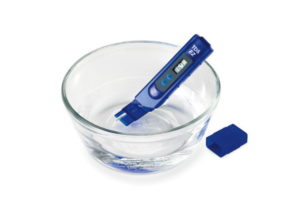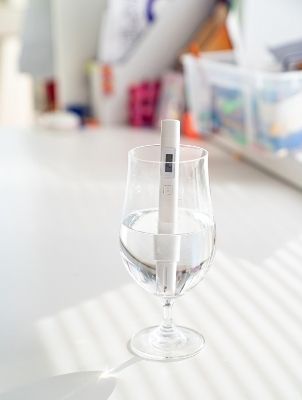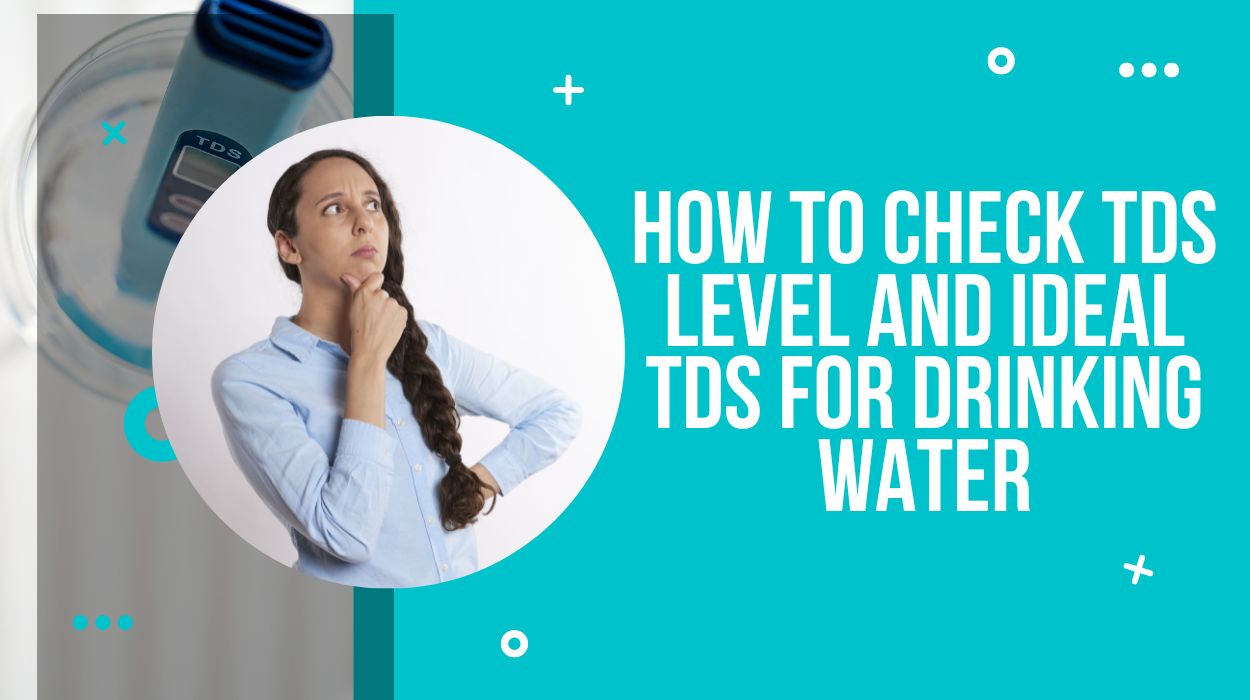Do you know how much pure water you drink? And do you know how to check its purity? And what is the ideal TDS for drinking water? Do not worry if you don’t know the answers to all these questions. We are here to explain everything in detail. And if you have no clue, tap water, rainwater, RO water, and groundwater have different TDS levels. Read on!
What is TDS?
 TDS is Total Dissolved Solids, the term used for the concentration of dissolved particles present in a water solution. The inorganic salts in water with high TDS levels are calcium, potassium, magnesium, sodium, carbonate, hydrogen carbonate, chloride, sulphate, and nitrate.
TDS is Total Dissolved Solids, the term used for the concentration of dissolved particles present in a water solution. The inorganic salts in water with high TDS levels are calcium, potassium, magnesium, sodium, carbonate, hydrogen carbonate, chloride, sulphate, and nitrate.
1. Why should you check the TDS level of the water you use?
TDS level helps you to know that the water you are drinking is pure or impure. What you drink should be fit for consumption, and you have to check whether it needs filtration or if it is highly contaminated or not. In the case you overlook checking TDS levels, the unsafe levels of contaminants may affect your health and cause gastrointestinal, reproductive and nervous system illness. It may also cause chronic diseases like cancer.
2. How you can check the TDS level of the water you use
The TDS level is measured in parts per million (PPM). This measurement describes the concentration level of water or soil. And remember that one PPM is equal to 1 mg/l or 1 mg/kg respectively. There are two common ways to check the TDS level of the water you are regularly using.
Let us see both the methods in detail.
1. Digital TDS meter

A digital TDS meter is a handy device indicating the level of TDS. It measures water conductivity and shows the estimated reading of the solution you dip the digital TDS meter in. You can also call a digital TDS meter, PPM testers or TDS testers.
The new model of the Digital TDS meter is different because of its unique feature of checking the salinity and temperature of the water. On the other hand, the old model only shows the TDS level. But whether it is old or new, they do not measure contaminants and will not tell how healthy your water is. Therefore, you can not wholly rely on a digital TDS meter to know your water quality. Cost, reliability, and availability According to the model and brand name, the price of digital TDS meters varies from 100 to 10000. They are reliable and show accurate results of the measurement of water conductivity. And it is available on all online shopping sites.
How will you use it? Always remember not to keep the digital TDS metre in direct sunlight or at any place of high temperature. Also, do not dip the metre into the water for more than 2 inches as it is the maximum immersion level because the metre is not watertight. Let us see the procedure for using the digital TDS meter correctly to get accurate results.
- First of all, remove the cap of the meter.
- Now, you will find three buttons on the metre, written as ON/OFF, TEMP, and HOLD. But you won’t find the TEMP button on the old model.
- Take the water you want to check in a small container.
- Now to know the TDS level of water, click the ON/OFF button.
- Dip the metre into the water and wait for at least 10 seconds for the results.
- You will get the accurate level of TDS of the water.
- Always clean the meter with a cloth after using it once.
- To hold the results even after taking the metre out of the container. Press the button HOLD when it’s already inside the container.
- And to see the water temperature, click the ON/OFF button.
- Dip the metre into the water and press the TEMP button.
- Wait for a few seconds to let it stable and get the accurate temperature in celsius.
- Clean the meter again with a cloth.
2. Filter paper and a scale

The filter paper and scale method is a simple one as you can do it at home or in the chemistry lab, and you need not buy anything. You should have a few pieces of equipment, water and a formula to calculate the TDS level of the liquid you chose. The apparatus you require is,
- A glass container or a beaker
- The sample water
- Filter paper
- Evaporating dish
- A sterilized stirring stick
- A pipette to store at least 50ml water
- A scale or a weighing machine
Let us see the procedure to check the water’s TDS level using filter paper and a scale.
- The foremost step is to weigh the empty and clean evaporating dish.
- Note down the weight of it in mg.
- Now take a water sample in a beaker or a container.
- Stir the water sample to disperse the matter present in it equally.
- It is essential to stir again if any matter is settled at the bottom of the beaker.
- Hold a pipette and sip out 50 ml sample water from the beaker.
- Do not forget to continue stirring even while collecting out water.
- Now, transfer it to the filter paper.
- Some residue may stick to the filter paper.
- Repeat this step of sipping 50 ml water from the beaker through a pipette and transferring it to the filter paper thrice.
- Transfer the particles left on filter paper to the evaporating dish.
- Wait until the filtrate dries.
- Again weigh the evaporating dish containing dried filtrates.
- Note down the weight.
- Use the formula: B-A, B being the weight of an evaporating dish containing dried particles and A being the weight of the empty evaporating dish.
- The answer to this formula will be the TDS level of the sample water you used.
Also, instead of using the pipette, you can take 50 ml water in an evaporating dish and let the water evaporate by keeping it on the burner. After it boils completely, some residue may be left at the bottom of the dish. Again using the same formula, you can check the TDS level of the water. But never forget to weigh the dried particles at the end, and do not forget to weigh a clean and dirt-free evaporating dish at the starting.
3. What is an ideal TDS level of drinking water?
It does matter what level of TDS water you use, whether to drink or wash utensils. But what TDS level of water you drink matters the most because it will affect your body internally the fastest. Therefore you must know the ideal TDS level of water, meaning which water level is good for your body. Read on the table to learn more!
| TDS level (mg/l) | How good is it? |
| Less than 50 | It is not good because it does not have any required minerals but it’s safe to drink. |
| 50-150 | It is excellent for drinking as it has all the minerals in equal amounts required for the body. |
| 150-250 | It is good to drink for optimal health. |
| 250-350 | It is also ideal, especially for people with heart diseases. |
| 350-500 | It is fair and the maximum TDS level to consume for the human body. |
| 500-900 | It is less acceptable. |
| 900-1200 | It is also less acceptable, and it will be better for your health if you try to avoid it. |
| 1200-2000 | It is not acceptable and can prove dangerous for you. |
| 2000 and above | It is also unacceptable. |
You May Like to Read:
Best Water Purifiers available in India
How To Buy The Right Water Purifier
Conclusion
TDS is Total Dissolved Solids, the term used to describe the concentration of dissolved particles in water that may or may not be dangerous to you. It is good to know the TDS level of the water you consume because highly contaminated water may result in many diseases. And to check the TDS level of the water, either you can buy a digital TDS meter or check the level by Filter paper and scale method. An ideal TDS level of water is less than 150 mg/l to 300 mg/l. We hope you found this article helpful, and now you know how to check the TDS level of the water you drink. Do share your experience of reading this article in the comment section below.


